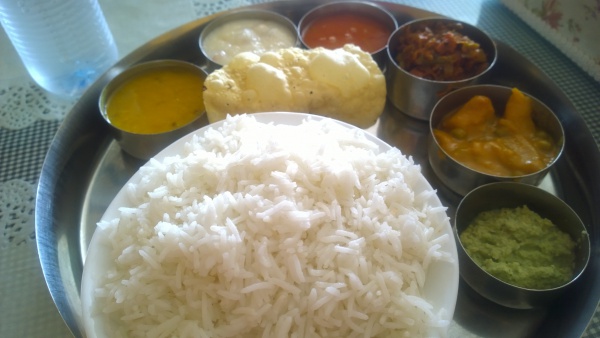Facts About Thali
Thali, a round platter, is a cornerstone in South Asian and Southeast Asian dining, particularly for serving food in a traditional manner. The term "thali" also refers to an Indian meal that features an assortment of dishes served together on this platter. Historically, thalis were a symbol of luxury, reserved for royalty and the elite. Today, they aim to balance six distinct flavors on a single plate: sweet, salty, bitter, sour, astringent, and spicy. This culinary approach makes thalis a popular choice in regions such as Punjab, Uttar Pradesh, and other parts of North India.
A typical thali includes a variety of items such as rice, dal (lentils), vegetables, roti (Indian bread), papad (crispy flatbread), yogurt, chutney, pickle, and a sweet dish. The dishes are served in small bowls called katoris, which are arranged around the edge of the round tray. The central portion usually holds the main dish, such as rice or roti, while the side dishes and accompaniments encircle it.
Thalis vary by region and may include different types of bread, vegetarian curries, and other local specialties. For instance, you might come across a Nepalese thali, Rajasthani thali, Gujarati thali, or Maharashtrian thali, each showcasing the unique flavors of its region. Thalis are also commonly enjoyed in South India and Southeast Asia, where rice is the primary staple.
Today, you can find thali dishes in modern restaurants around the world, often served on beautifully designed stainless steel platters. Some restaurants even offer unlimited thalis, allowing diners to enjoy endless refills of their favorite dishes. Food critic Kunal Vijaykar highlights that these unlimited thalis truly reflect Indian tradition, celebrating not only the variety of flavors but also the rich culinary heritage of India.

 India
India